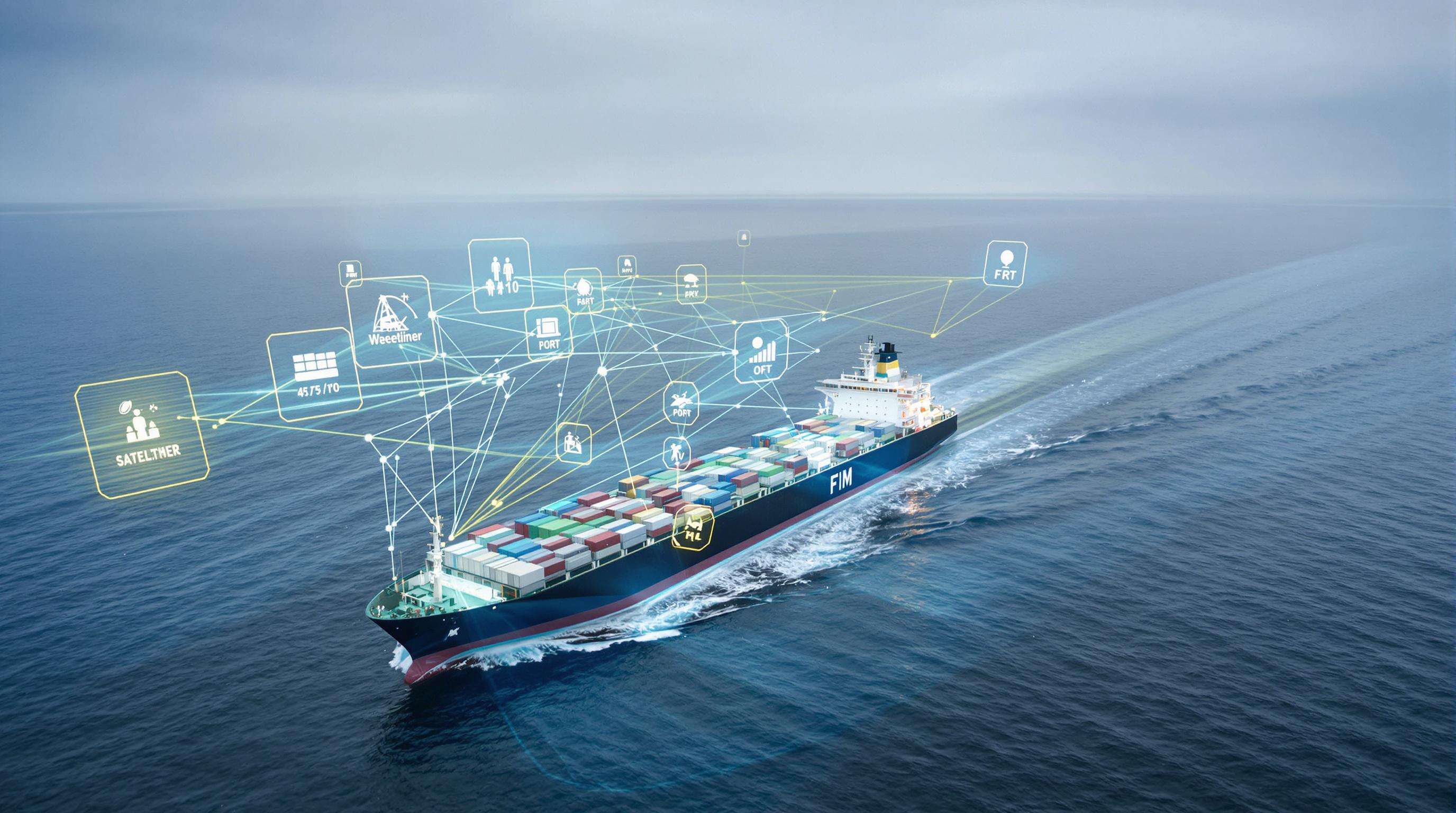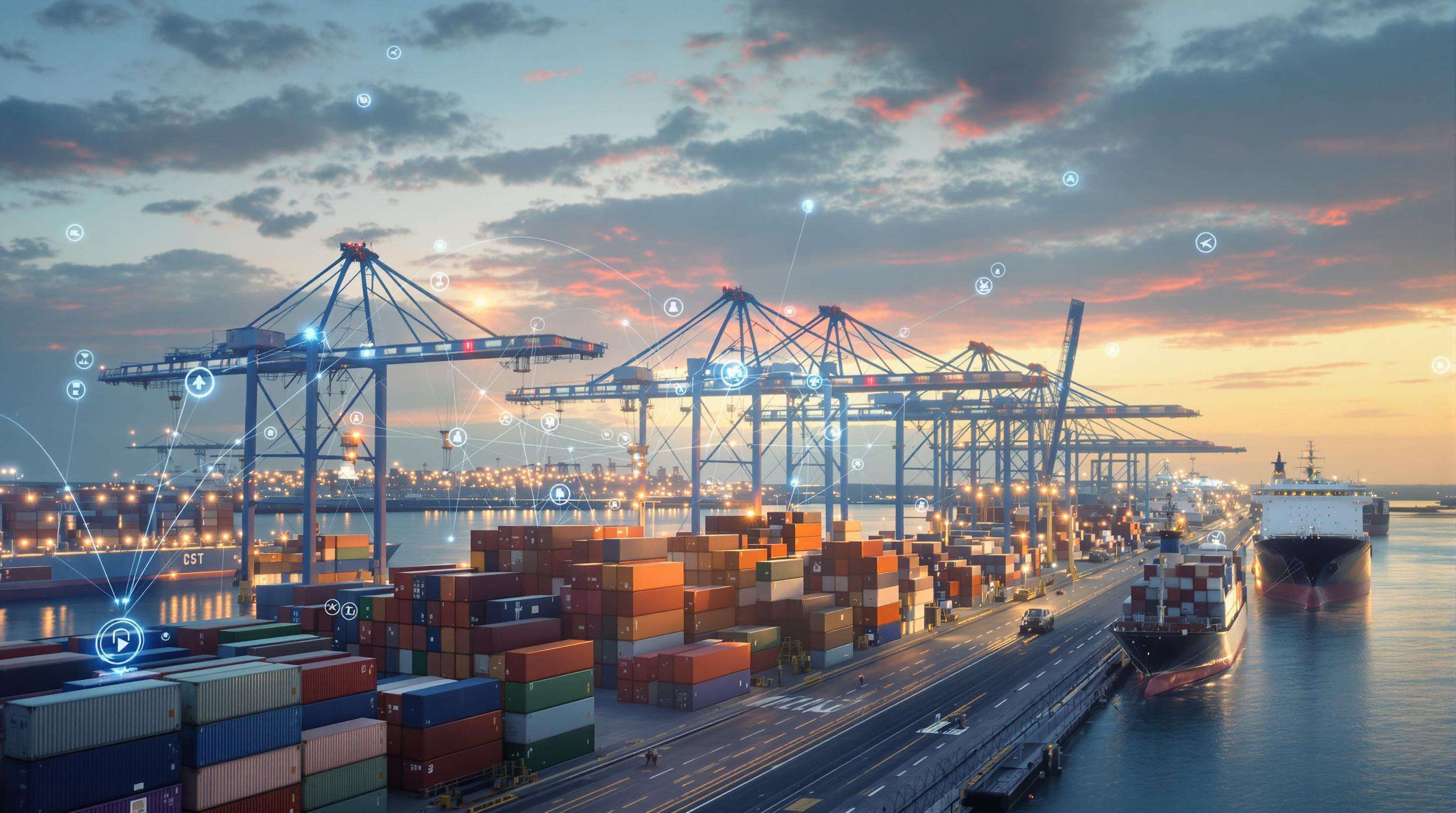E-commerce fulfillment becomes increasingly difficult with global container volume increasing 4.2% a year (2024 Maritime Transport Review). Climate & environmental regulations, such as the IMO 2020 sulfur caps, add in an average of $740k in compliance costs per carrier (Ponemon 2023) – leaving operators to make tradeoffs between sustainability and the bottom line. Geopolitical flashpoints – notably Red Sea transit upsets – are now delaying 18% of Asia-Europe shipments by 11-14 days, and are reversing the ripple effect that shippers and carriers continue to experience due to their inventory planning cycles.
New customs policies further strain operations. The elimination of $800 duty-free thresholds for small parcels has pushed 63% of retailers toward containerized ocean freight, according to 2025 trade data. This shift requires complex documentation workflows, with major retailers reporting 34% longer customs clearance times compared to pre-2024 air shipments.
Cybersecurity vulnerabilities compound these logistical hurdles. Outdated vessel tracking systems and fragmented port communication networks expose 41% of maritime operators to data breaches, per 2023 shipping security audits. These systemic challenges demand AI-driven solutions to synchronize cargo movements with dynamic regulatory and geopolitical conditions.

Today's sea transport is stressed by growing demand for efficiency, in terms of fuel and delivery costs, making route optimization an intelligent necessity. Predictive analytics has become a vital tool, leveraging historical data and real-time inputs to inform decision-making. Through the calculation of elements such as weather, port and vessel performance information, these applications support shipping operators in making informed decisions to avoid potential risk and to keep costs in check. One 2024 industry forecast, for example, predicts that AI-powered route optimization has the potential to reduce the fuel consumption for container ships by as much as 22%, revealing its disruptive influence on maritime logistics.
The models, which use artificial intelligence and machine learning, parse decades of logs of port activity, as well as satellite imagery and vessel tracking information, to discern patterns of congestion. Machine learning algorithms predict choke points at strategic hubs like the Suez Canal and Singapore Port up to two weeks out, giving carriers time to reschedule arrivals or move cargo volumes around. One 2023 study showed that predictive models cut idle time for ports clogged with ships by 30%, saving mid-sized fleets $740k a year per vessel. This smart combing has been especially important during peak e-commerce seasons, when port throughput capacity is a common bottleneck to demand spikes.
Real-time weather data from oceanic buoys and meteorological satellites feed into dynamic routing systems that recalculate optimal paths hourly. These algorithms balance multiple variables:
A shipping consortium reported 40% fewer storm-related diversions in 2024 after implementing such systems, while maintaining 99.2% on-time delivery rates. The technology also prevents cascading schedule disruptions–when one delayed vessel impacts dozens of downstream port operations.
A major Asian shipping line implemented predictive analytics across its 80-vessel fleet, integrating:
Machine learning models suggested that a speed adjustment of 1.8 knots under the traditional plans was the optimal speed while accounting for forecast currents and the risks associated with tropical depression. During the 18-month period, this optimization approach led to a savings of 18% of fuel, or $5.6M annually, with contractual delivery windows fulfilled within 6-hour tolerances. Vessels also experienced 12% fewer engine wear-and-tear incidents as a result of the load balancing being optimized.

Modern logistics networks leverage artificial intelligence to address complex coordination challenges across global shipping routes. Three innovations stand out in transforming maritime operations: machine learning (ML) for port coordination, IoT (Internet of Things) for cargo visibility, and blockchain for documentation integrity.
Machine learning algorithms consider historical traffic patterns, weather patterns and ship schedules to maximise multicall operations. The average turnaround time in a top European port decreased by 22% after operations systems that automate berth allocation and coordinate tugboat sailings were introduced. They also forecast surges in cargo volume, which allows for preemptive workforce and equipment planning at the interlinked terminals.
This enables carriers to track the temperature of perishable pharmaceuticals and other products in transport and receive instant alerts if they do not maintain the proper temperature. One of these, predictive maintenance systems that use engine component vibration sensors, have already demonstrated the potential to reduce unscheduled repairs by 18% in pilot programs.
Blockchain creates immutable digital records for bills of lading, customs certificates, and insurance documents. Smart contracts automatically verify compliance requirements between ports, cutting cargo release delays caused by manual paperwork reviews. Early adopters report a 40% reduction in administrative processing time through automated clearance triggers when vessels enter territorial waters.
Efficiency versus delivery time is an ongoing dilemma for contemporary sea transport. Implementing slow steaming allows fuel consumption to be decreased by 18–25% (ICS 2023) but that too large a speed reduction had the potential to disturb just-in-time logistic chains. Sophisticated A.I. now crunches data about the weather, port congestion and how urgently the cargo is needed to determine how fast ships should cruise. A recent industry survey showed that ships with optimised speed profiles arrived 94% on schedule, saving 12% in fuel consumption vs traditional slow-steaming methods. This hybrid model enables carriers to sidestep the illusory costs of stagnant inventory while complying with environmental benchmarks.
Three innovations are reshaping fuel management:
With current systems available, bunker fuel waste can be reduced by 9–15%, through continuous combustion efficiency analysis. Novel biofuel mixes, developed by neural networks, could minimise emissions and avoid a need for engine modifications, early results have found combustion profiles are 23% cleaner than regular marine diesel. For others, the combination of satellite weather monitoring and fuel management systems has slashed annual fuel costs by up to $2.1 million per Panamax-size vessel.
AI-powered port sequencing tools now optimize global routes at unprecedented resolution, considering:
| Factor | Optimization Impact |
|---|---|
| Tidal patterns | 8–12% berthing efficiency gain |
| Local labor costs | $15k–$40k per port call |
| Customs clearance | 2.5-day average time savings |
One program, a 14-month trial of automated scheduling systems, cut wait times in crowded Asian ports by 18% by using machine-learning-powered slot allocations. Such models adapt vessel speeds and arrival orders on the fly to accommodate port operating capacity, and show how cooperation between carriers and port terminals can resolve congestion without compromising tight delivery schedules.
Fully remote-controlled container ships are expected to capture 15% of the world’s seafaring trade by 2040, as AI improves navigation and collision-avoidance sensors. Prototypes such as the Norwegian Yara Birkeland (in service since 2022) already show that crew size can be reduced by 95% with fully automated cargo handling and docking. But mass adoption is hindered by regulatory bottlenecks, with the International Maritime Organization (IMO) aiming to establish safety standards by 2035. Until 2030 it is predicted that models involving AI decision making plus remote human supervision and oversight will lead to hybrid forms of crewing with operational savings of $180,000 per voyage (industry analysis, 2024).
Green shipping corridors – designated emissions-free sea lanes – aim to cut 45% of shipping’s carbon pollution by 2035. The Shanghai-Los Angeles sailway, rolled out in 2023, is built on AI-assisted wind propulsion and ammonia engines which were specifically designed for 12% less fuel spent per container shipped. Shore power connections are now required at 12 of the largest ports, which has cut emissions from vessels at port by 85%. Demand for hydrogen bunkering hubs has increased by 300% since 2022 to meet the IMO’s 2050 net-zero mandate. Case studies from just last year demonstrate that green corridors can save supply chain carbon costs of $8–$12 per ton shipped.
Challenges include increasing global container volume, climate and environmental regulations, geopolitical flashpoints, cybersecurity vulnerabilities, and new customs policies.
Predictive analytics leverage historical data and real-time inputs for route optimization, reducing fuel consumption by up to 22% and predicting congestion to decrease idle times.
AI assists in multi-port coordination, real-time cargo monitoring, and transparent shipping documentation using machine learning, IoT, and blockchain technology.
Strategies include slow steaming vs. speed optimization balance, bunker fuel optimization techniques, and strategic port call sequencing models using AI-powered tools.
The future involves the development of autonomous container ships and green corridor initiatives for carbon-neutral shipping.
 Hot News
Hot News2024-11-15
2024-11-11
2024-11-06
2024-10-31
2024-10-28
2024-10-25